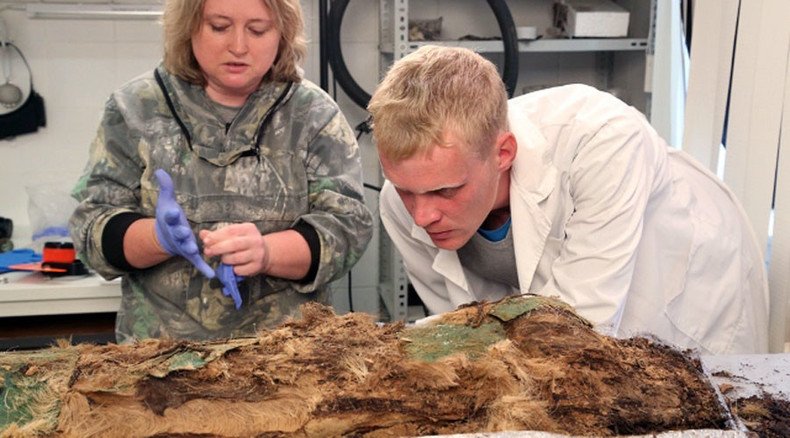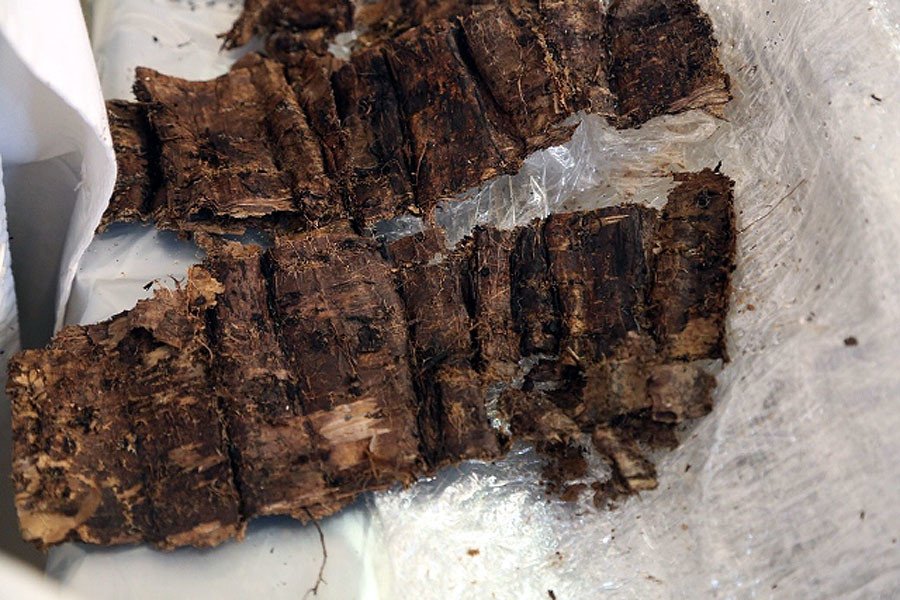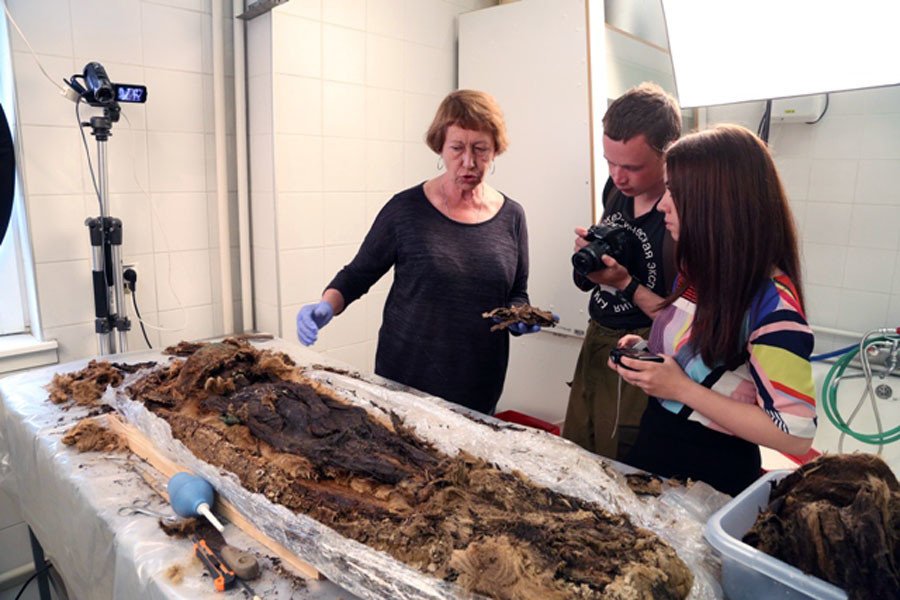Child mummy wrapped in fur & with ax unearthed in Russia’s Far North

The mummy of a six- to seven-year-old boy dating back to the 13th century has been unearthed in Russia’s Far North, scientists say. The child, wrapped in a cocoon of furs and birch bark, was found with a small bronze ax.
The body was found near Zeleny Yar archeological memorial in Russia’s Yamalo-Nenets Autonomous Region, according to a statement from the local museum, where researchers gathered for the delicate mission of freeing the mummy from the fur it was wrapped in.
Before the procedure the scientists performed computer scan on the cocoon which showed that it contains mummified remains of the child, most probably a boy of six or seven years old.

READ MORE: 10,000yo ‘Sasha’: Hunters discover world’s 1st baby woolly rhino in Siberian permafrost
The scientists believe the mummy to be male as they found a small bronze ax which was lying along the right side of the body. Apart from the ax, the archeologists uncovered a pendant in the shape of a bear and silver iron rings.
The boy had suffered from malnutrition or a severe disease, according to Sergey Slepchenko, a junior researcher from the Institute of Northern Development in Siberian city of Tyumen. He came to that conclusion after analyzing the defects on the mummy’s bones which showed the child’s temporary growth retardation.
“The body of the child rests on a bed of birch bark and is wrapped in a blanket of soft fur. On the blanket there are copper plates, bound by leather cords. They cover the face, the chest and abdomen, and hips,” says the museum statement.

READ MORE: MRI reveals ancient Siberian ‘princess’ had breast cancer
Harder fur and birch bark were found in the next layers. Evgenia Svyatova, an anthropologist, said that these layers didn’t form a cocoon, as previously thought, but they covered fur cocoons.
The child was “lying on his back, arms stretched, legs extended; the furs were used in the ritual,” Alexander Gusev, junior researcher at the Research Center of the Arctic Studies told OGTRK news.
READ MORE: Siberian elders vote to bury 2,500yo mummy to stop quakes, floods
The scientists believe that the mummy dates from the 13th century, however the exact period, along with the child’s age and sex, will be defined after one more computer scan.

“We have not completed the works with this find yet, so we hope to find new details and a clearer picture soon. For now I can say that in the basis of this burial is some oval wooden structure, resembling a large oval plate,” archeologist Natalia Fyodorova, deputy director of the Shemanovsky Science Museum and Exhibition Centre, told the Siberian Times.












